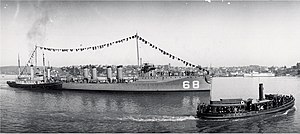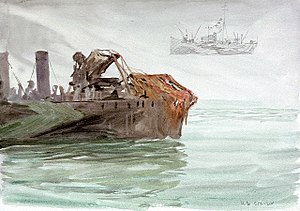
USS Jacob Jones (DD-130), named for Commodore Jacob Jones USN (1768–1850), was a Wickes-class destroyer. Jacob Jones was laid down by the New York Shipbuilding Corporation at Camden, New Jersey on 21 February 1918, launched on 20 November 1918 by Mrs. Cazenove Doughton, great-granddaughter of Commodore Jones and commissioned on 20 October 1919, Lieutenant Commander Paul H. Bastedo in command. She was sunk by a German submarine in 1942 during World War II.

The Mahan-class destroyers of the United States Navy were a series of 18 destroyers of which the first 16 were laid down in 1934. The last two of the 18, Dunlap and Fanning, are sometimes considered a separate ship class. All 18 were commissioned in 1936 and 1937. Mahan was the lead ship, named for Rear Admiral Alfred Thayer Mahan, an influential historian and theorist on sea power.

The first USS Philip (DD–76) was a Wickes-class destroyer in the United States Navy during World War I, later transferred to the Royal Navy as HMS Lancaster. She was named for John Woodward Philip.

USS Fairfax (DD-93) was a Wickes-class destroyer in the United States Navy during World War I, later transferred for World War II service first to the Royal Navy as HMS Richmond (G88), a Town-class destroyer, and then to the Soviet Navy as Zhivuchy.
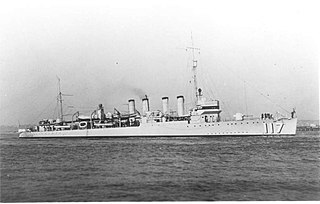
USS Dorsey (DD–117), reclassified DMS-1 on 19 November 1940, was a Wickes-class destroyer in the United States Navy during World War I. She was named for John Dorsey.

USS Hogan (DD-178/DMS-6) was a Wickes-class destroyer in the United States Navy during World War II.

USS Drayton (DD-23) was a Paulding-class destroyer in the United States Navy. She was the first ship named for Captain Percival Drayton.

USS Burrows (DD-29) was a modified Paulding-class destroyer in the United States Navy during World War I and later in the United States Coast Guard, designated (CG-10). She was the second ship named for Lieutenant William Ward Burrows II.

The first USS Ammen (DD-35) was a Paulding-class destroyer in the United States Navy during World War I and later in the United States Coast Guard, designated as CG-8. She was named for Rear Admiral Daniel Ammen.
The first USS Duncan (DD-46) was a Cassin-class destroyer in the United States Navy during World War I. She was named for Commander Silas Duncan.
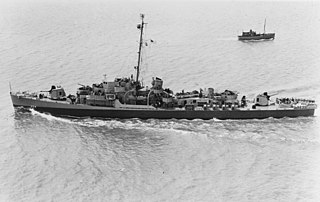
USS Rudderow (DE-224) was the lead ship of her class of destroyer escorts, in service with the United States Navy from 1944 to 1947. After spending decades in reserve, she was sold for scrap in 1970.

USS Davis (DD-65) was a Sampson-class destroyer in the United States Navy during World War I. She was the second Navy ship named for Rear Admiral Charles Henry Davis (1807–1877). She served with the United States Coast Guard as (CG-21).

USS Barker (DD-213) was a Clemson-class destroyer in the United States Navy in World War II, named for Admiral Albert S. Barker.

USS John D. Edwards (DD-216) was a Clemson-class destroyer in the United States Navy during World War II.

USS Parrott (DD-218) was a Clemson-class destroyer in the United States Navy during World War II and was the second ship named for George Fountain Parrott.

USS Gilmer (DD-233/APD-11) was a Clemson-class destroyer in the United States Navy during World War II. She was the first ship named for Secretary of the Navy Thomas Walker Gilmer.

USS Kane (DD-235/APD-18) was a Clemson-class destroyer in the United States Navy during World War II. She was the first ship named for Elisha Kent Kane.

USS Sicard (DD-346/DM-21/AG-100) was a Clemson-class destroyer in the United States Navy following World War I. She was named for Montgomery Sicard.

USS Patterson (DD-392), a Bagley-class destroyer, was the second ship of the United States Navy to be named for Daniel Todd Patterson, an officer of the US Navy who served in the Quasi-War with France, First Barbary War, and the War of 1812.
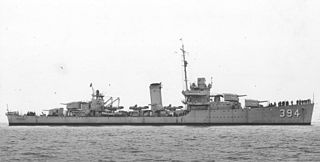
The second USS Sampson (DD-394) was a Somers-class destroyer in the United States Navy. She was named of William Thomas Sampson a rear admiral known for his victory in the Battle of Santiago de Cuba during the Spanish–American War.
